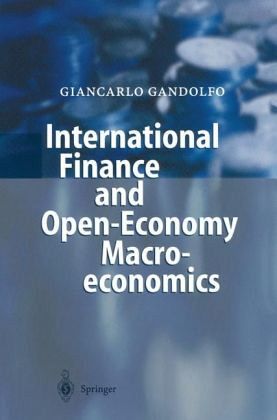Nicht lieferbar

International Finance and Open-Economy Macroeconomics
Study Edition
Versandkostenfrei!
Nicht lieferbar
Weitere Ausgaben:
"This book deals with the financial side of international economics and covers all aspects of international finance. There are many books and articles by exponents of alternative points of view. I know of no other book that provides the scope, balance, objectivity and rigor of the book." (Professor Jerome L. Stein, Brown University)From the reviews: "In this survey of international finance and open-economy macroeconomics, Gandolfo succeeds in meeting the needs of advanced undergraduate or lower-level graduate students through a largely textual and graphical approach, while at the same time pre...
"This book deals with the financial side of international economics and covers all aspects of international finance. There are many books and articles by exponents of alternative points of view. I know of no other book that provides the scope, balance, objectivity and rigor of the book." (Professor Jerome L. Stein, Brown University)
From the reviews: "In this survey of international finance and open-economy macroeconomics, Gandolfo succeeds in meeting the needs of advanced undergraduate or lower-level graduate students through a largely textual and graphical approach, while at the same time presenting in the appendices explicit mathematical analyses for more advanced graduate students." (Journal of Banking & Finance 2004)
From the reviews: "In this survey of international finance and open-economy macroeconomics, Gandolfo succeeds in meeting the needs of advanced undergraduate or lower-level graduate students through a largely textual and graphical approach, while at the same time presenting in the appendices explicit mathematical analyses for more advanced graduate students." (Journal of Banking & Finance 2004)



